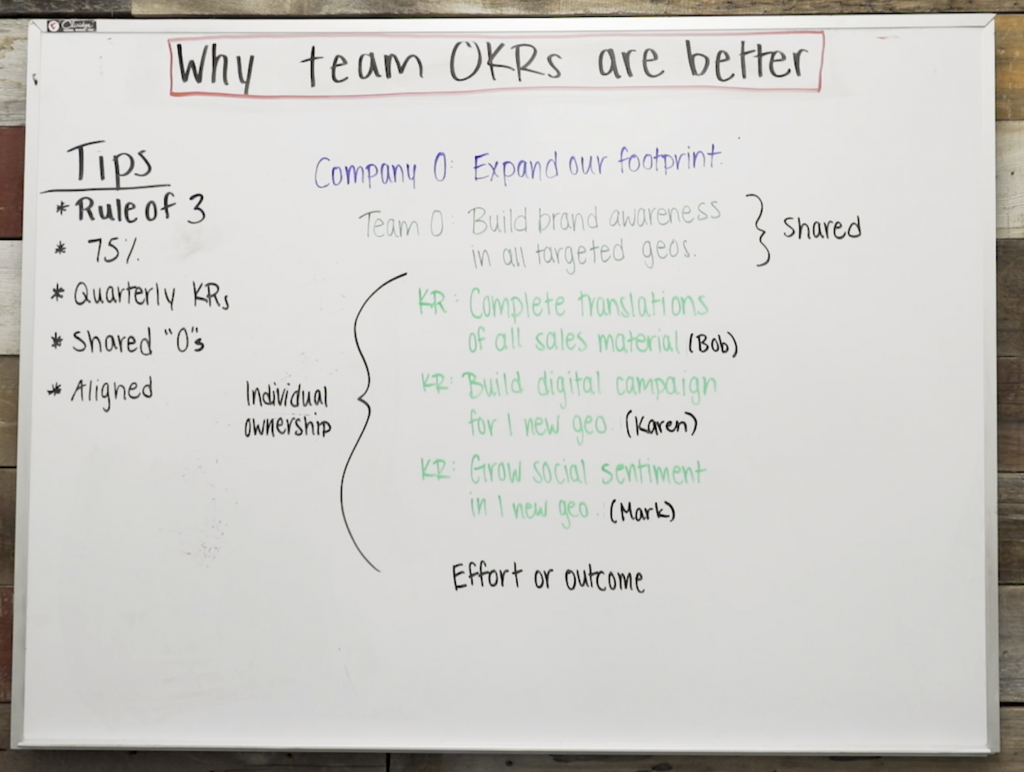In this video, we will discuss why team OKRs are better than unaligned OKRs. This video is central to really simplifying OKRs for you and your team.
Let’s review why team OKRs are better than unaligned OKRs and how to simplify OKRs for you and your team. Here at OnStrategy, we are believers in a simplified approach to OKRs and the complex things related to strategic planning and strategy. In our previous post we reviewed the simplified approach to OKRs and if you are starting there, we recommend you read and watch that video first.
No OKR Puddles!
First things first, we at OnStrategy don’t believe in creating OKR puddles or unaligned OKRs. We like OKRs to be aligned to where an organization is trying to go. In other words, we’re aligning to a company objective.
Shared Versus Individual Ownership
Next, it’s time to build out your team OKRs, or your team’s O and its key results. So what’s different about this is a team objective is a shared objective. In your classic OKR structure, the O and the KRs are all owned by the same person. It’s a unit of ownership and performance. We’re suggesting changing that because of the shared accountability, collaboration, and the simplicity that needs to come from OKRs and alignment and execution.
So for example the team O (Build brand awareness in all targeted geographies) is shared. Certainly, it’s championed by the business leader, in this case, the marketing director. And then there’s a handful of key results. Those are the “hows” we’re achieving our objective. Now, the magic on this is that the KRs are owned individually. So, in this case, “Completing translations of all sales materials” is owned by Bob, “Build digital campaign for 1 new geography” is owned by Karen, and “Grow social sentiment if 1 new geography” is ownd by Mark. As we’ve said before, just a tip, KRs can be either be an effort, so completing translations is like an initiative and effort, or an outcome, a quantifiable metric, suck as social sentiment. So again, what we really want to comment on here is that the shared O is what makes team OKRs really work.
Rule of Three
Remember, in any good structure, the rule of three, which means that every person owns no more than three KRs. A whole team might have three O’s, and each O would have three or more KRs. And we look for 75% complete or 75% attainment. A hundred percent is not the goal. Seventy-five percent is. That’s a good rule from Google.
Quarterly KRs
Quarterly KRs, another piece that’s really important. We suggest these KRs are quarterly and the team objective is annual.
Shared “O’s” & Alignment
We talked about shared O’s. And again, to really emphasize the aligned company objective, and that makes the whole OKR stack come together really nicely.













